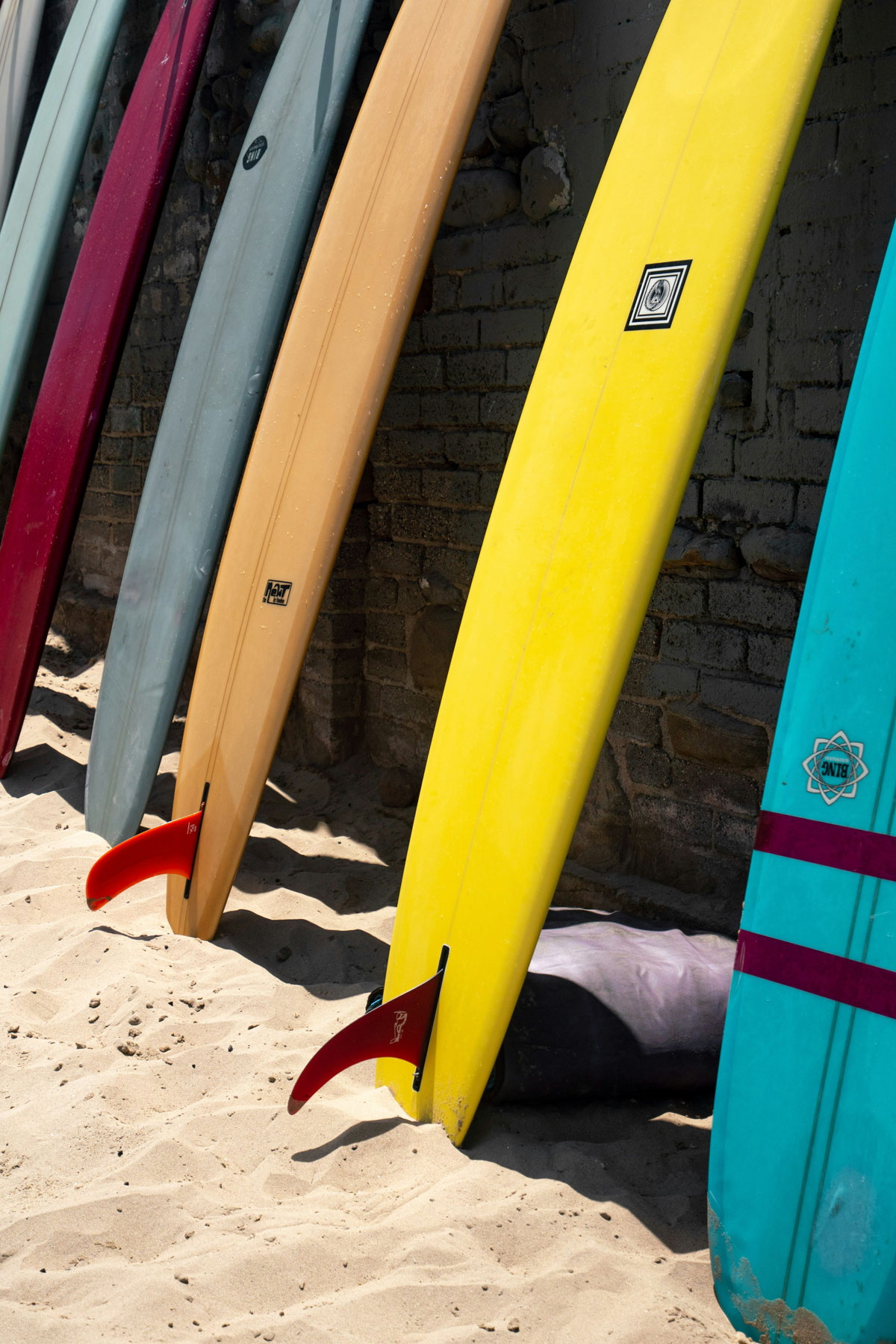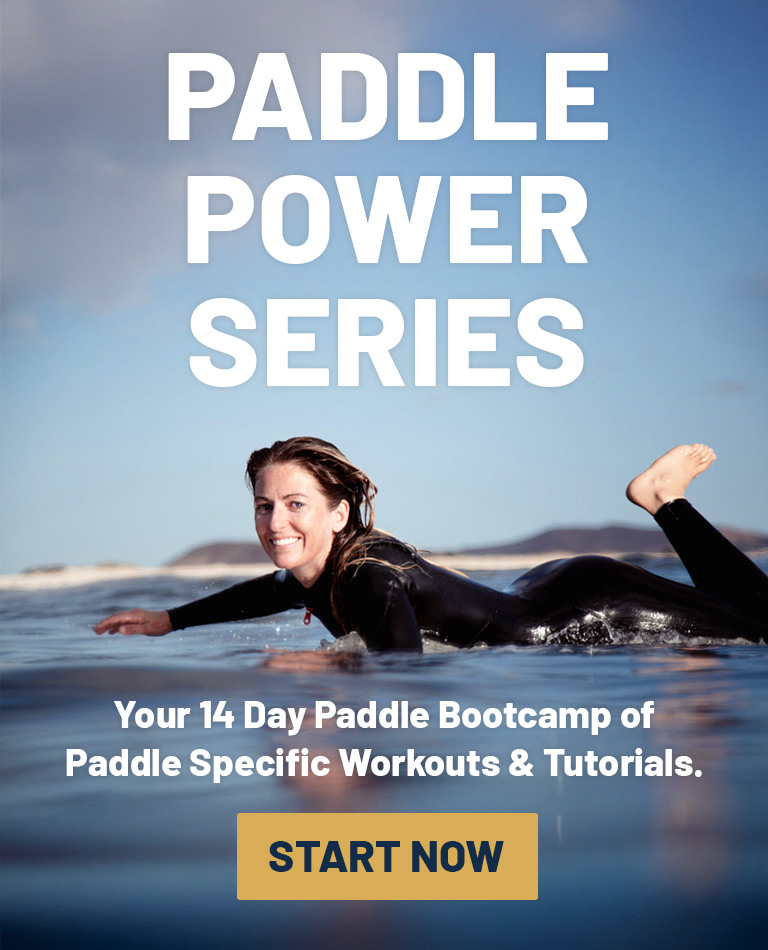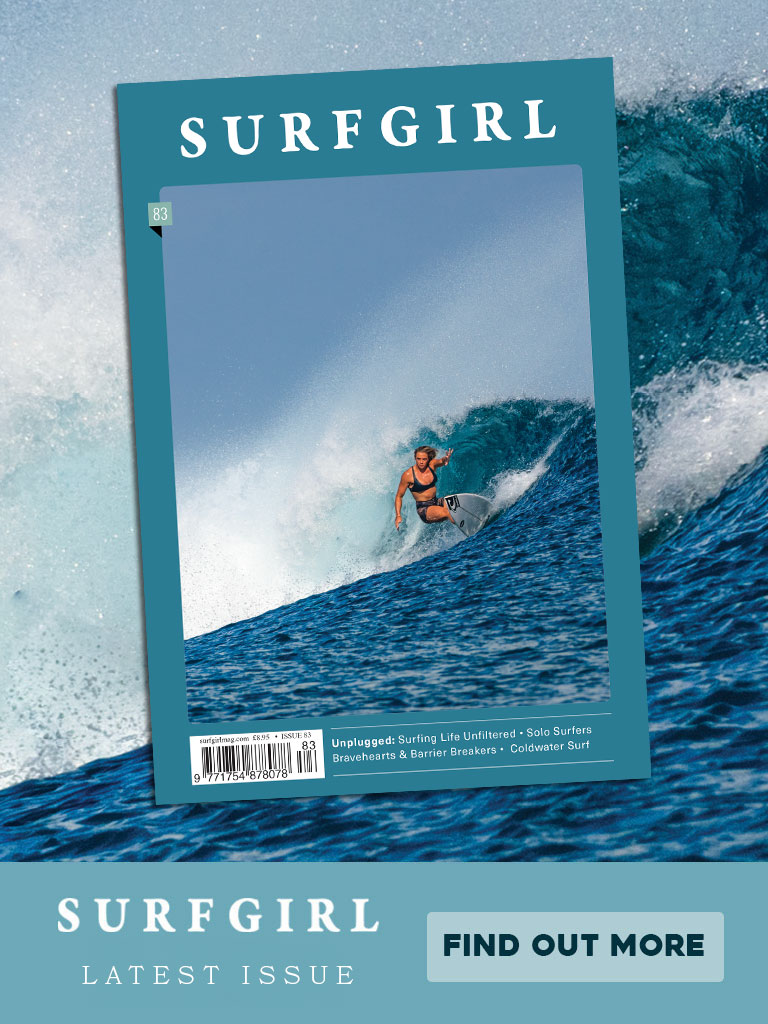
Fins aren’t just an add-on – they’re the turbo boost for your surfboard and the key to unlocking next-level performance. Whether you want sharper turns, more speed, or extra control, the right fins will take your ride from ordinary to epic.
Advancing in surfing isn’t just about mastering new tricks – it also means experimenting with different gear. From testing various surfboard shapes and tail designs to switching up your fins, there’s a huge selection of equipment to explore. With advancements in technology and so many options available, choosing the right gear can sometimes be a struggle to keep up with.
To simplify things, here’s a guide to surfboard fins, their function, and the impact they have on your surfing performance.
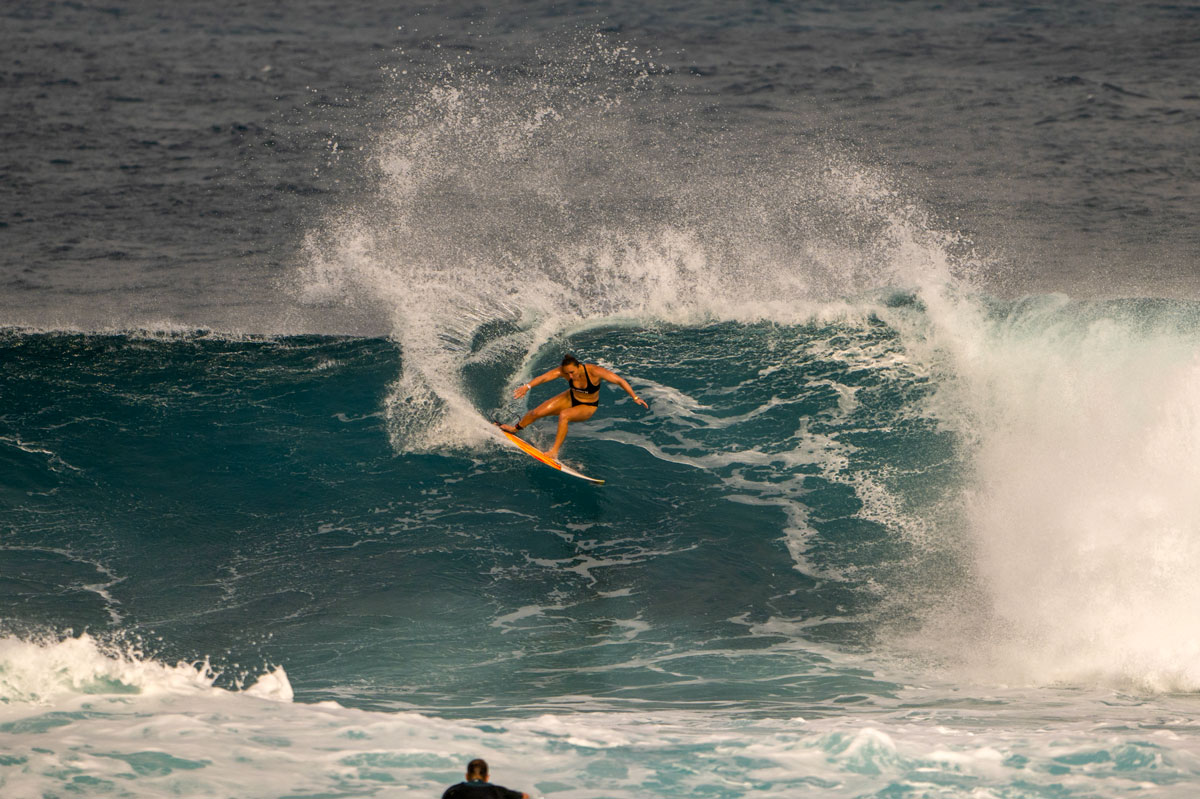
The purpose of fins
Fins are attached to the underside of your surfboard and influence its stability, drive, and overall feel. Commonly made from plastic, carbon fibre, or fibreglass, they fit into designated fin boxes on the bottom of the board. In the water, fins help maintain control and manoeuvrability – like a rudder on a boat.
Flex
The flexibility and stiffness of fins greatly affect how a surfboard handles on a wave. For beginners, stiffer fins provide greater stability and are more forgiving. However, they make sharp turns more difficult, resulting in wider, sweeping arcs. On the other hand, flexible fins allow for quicker, more responsive turns, making them better suited for intermediate and advanced surfers.
Foil
A fin’s shape, known as its ‘foil,’ influences how the board moves through the water. The thickest part of a fin is usually in the middle, tapering towards the edges. Some fins are flat on one side and foiled on the other – these are commonly used as side fins. Others are foiled on both sides and are typically used as centre or single fins. The design of the foil creates lift under the board, improving manoeuvrability in the right conditions.
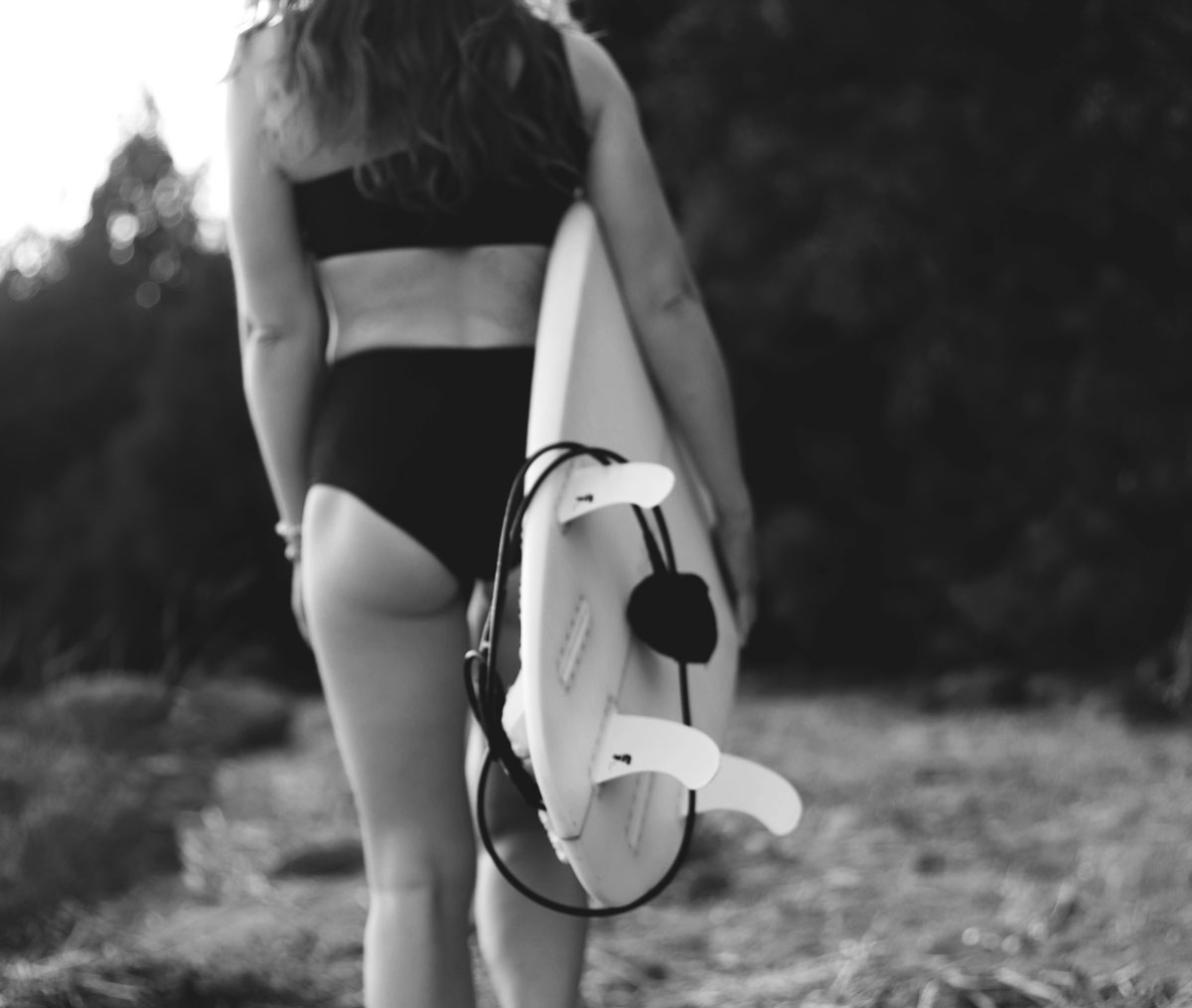
Thruster (three-fin setup)
The thruster setup is the most popular setup found on various surfboard types. It provides a stable ride and works well in most ocean conditions, making it a favourite among surfers of all abilities. In this setup, the outer fins are flat on the inside, while the centre fin is foiled on both sides.
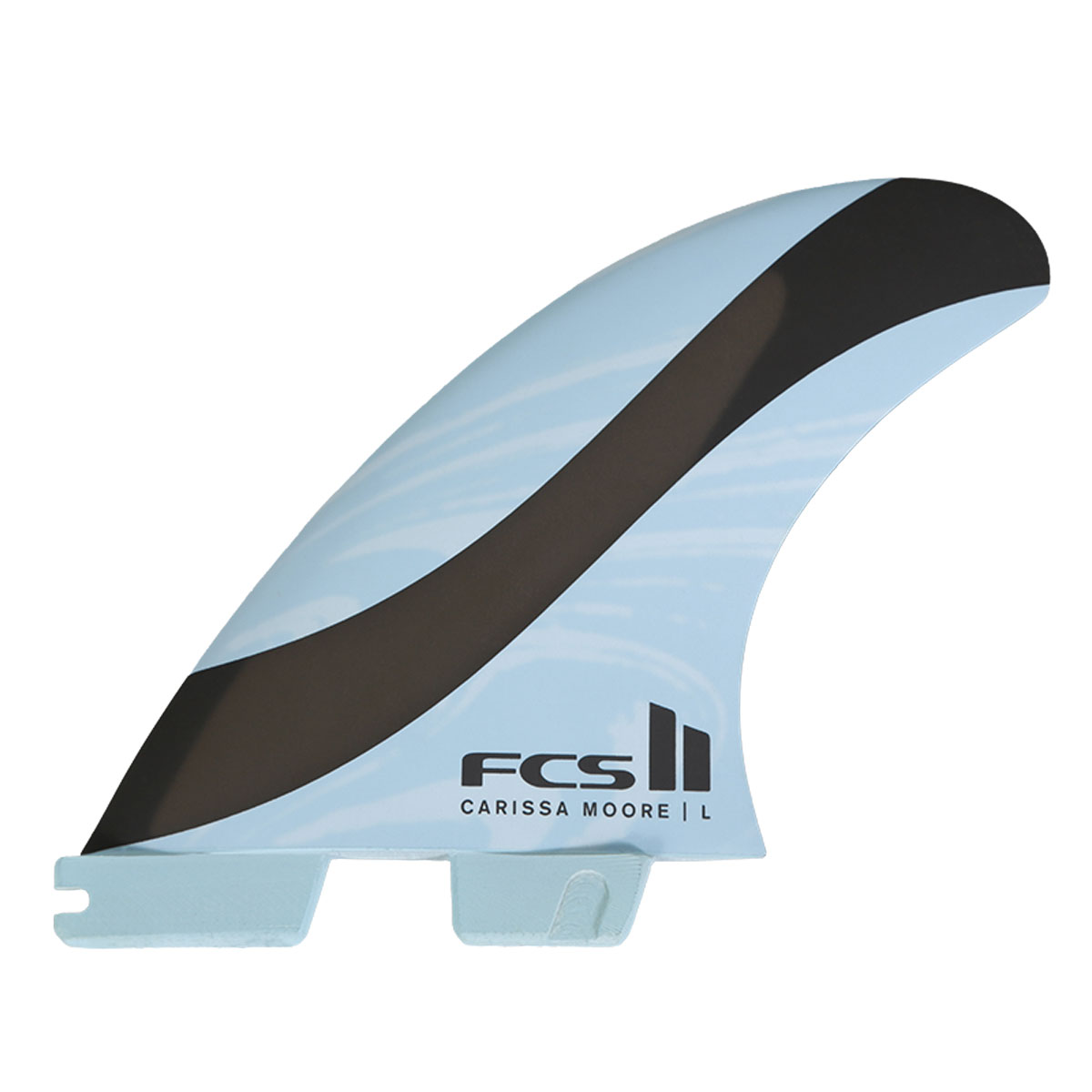
FCS II Carissa Moore Signature Tri Fin Set
Designed in collaboration with Carissa Moore for female surfers, this all-round fin is designed to perform seamlessly in a range of different conditions and board models.
£109.95
surffcs.co.uk
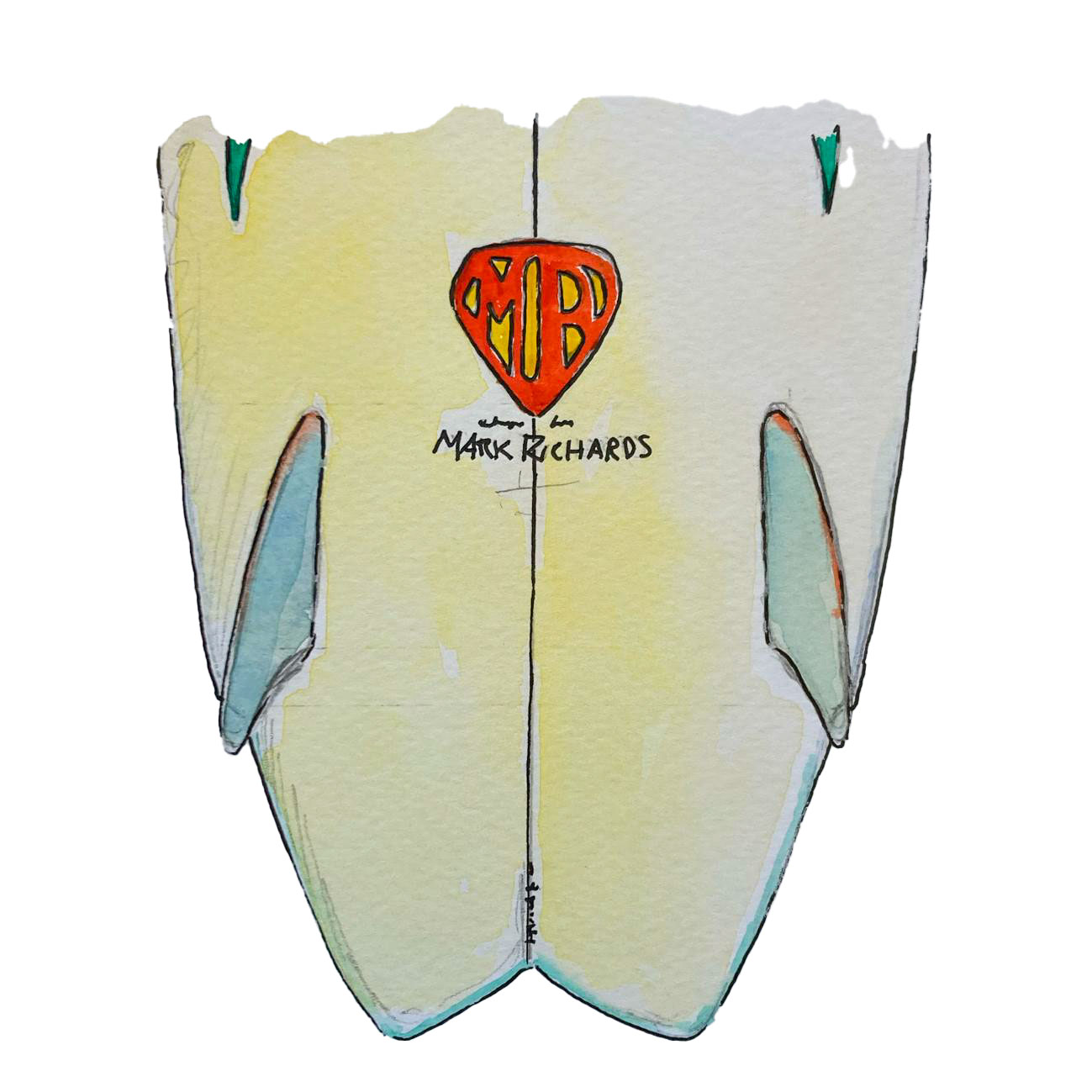
Twin fin (two-fin setup)
This setup offers good manoeuvrability in smaller, cleaner waves, and longer, more drawn out turns. However, it provides less control in larger waves due to reduced anchoring. Twin fins are commonly seen on shortboards and fish boards.
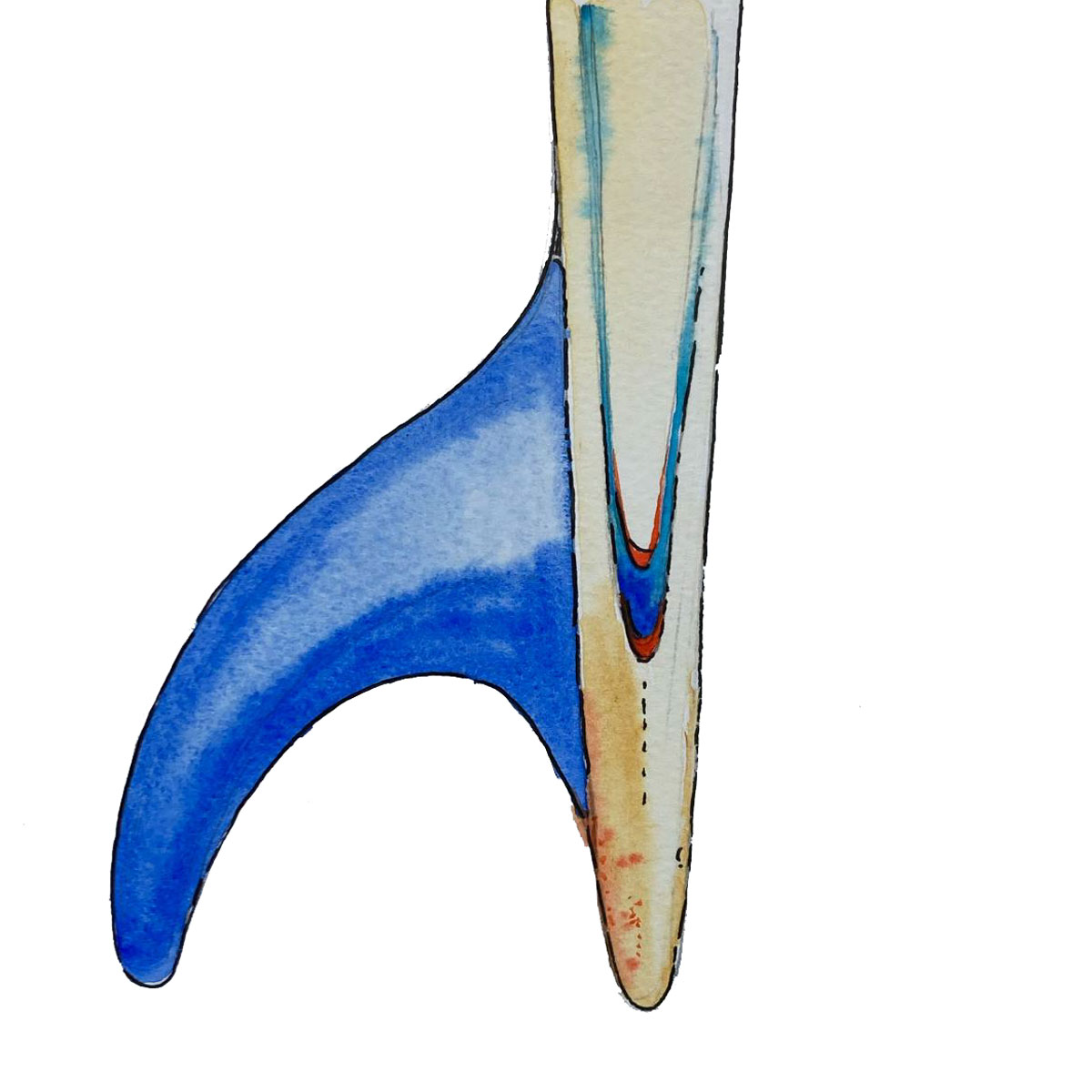
Single fin (one-fin setup)
Often found on longboards and retro surfboards, the single fin setup promotes smooth, sweeping turns rather than sharp manoeuvres. It provides stability and control in small waves, making it a good choice for beginners and longboard enthusiasts.
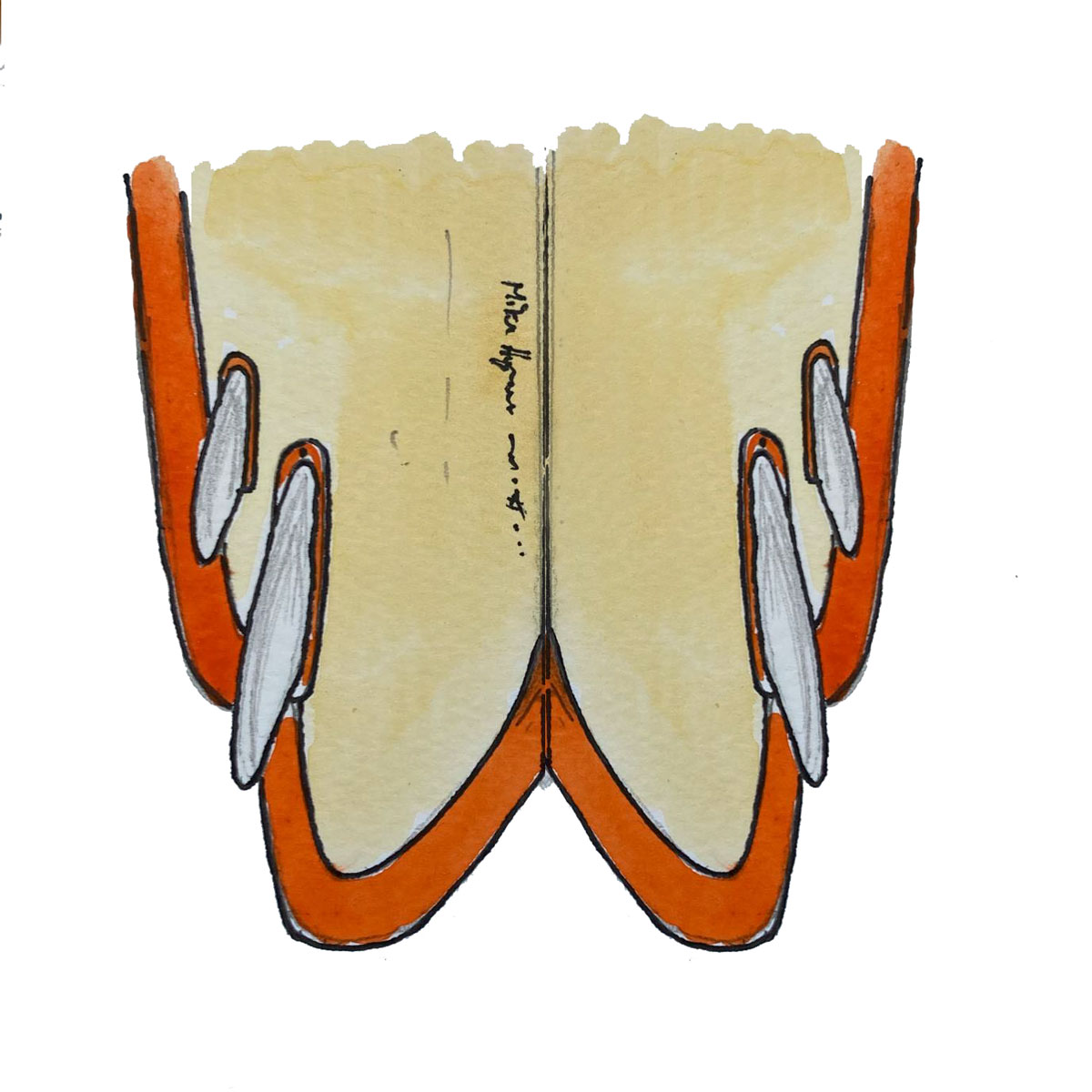
Quad fin (four-fin setup)
Quad fins deliver increased power, drive, and speed, making this the ideal setup for advanced surfers looking for a high-energy ride.

Five fin (‘Bonza’ in the Southern Hemisphere)
A five-fin setup offers versatility, allowing surfers to mix and match configurations, combining aspects of a quad, twin, or thruster setups for varied performance.
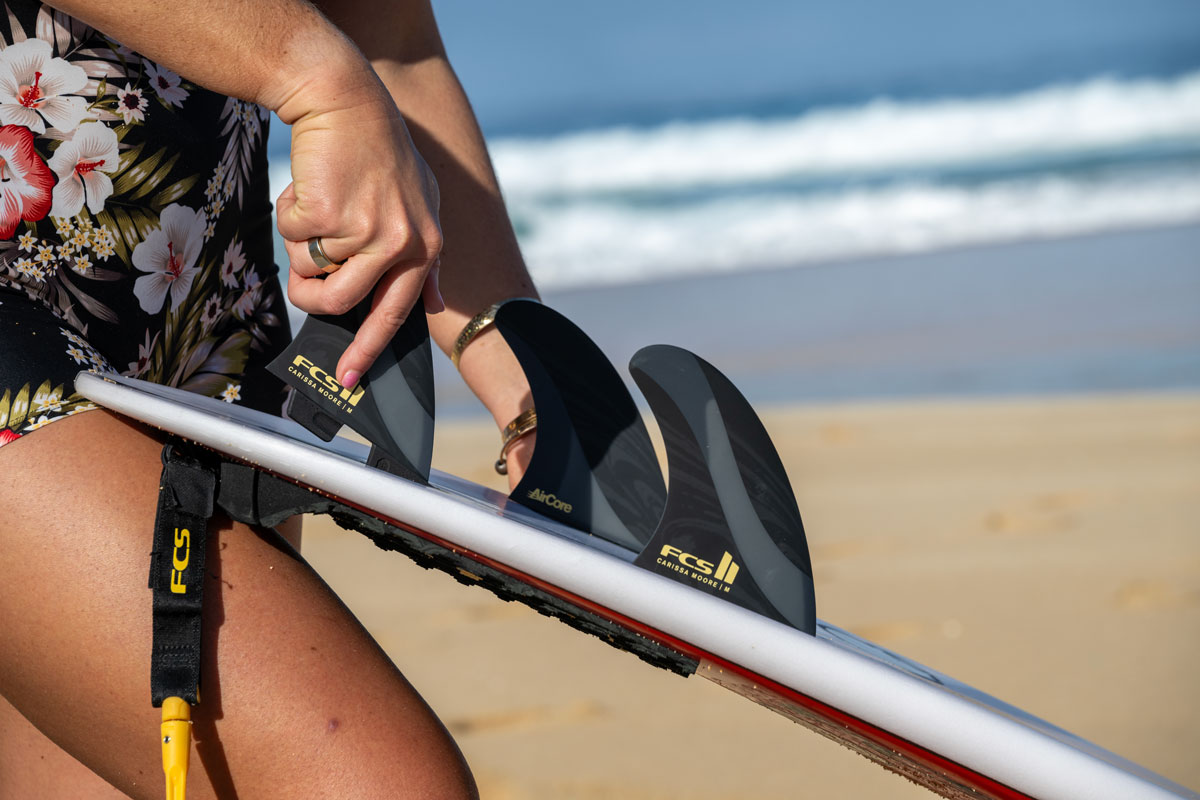
Attaching your fins
The method of attaching fins depends on their design. Traditional fins (FCS I) require screws, while modern technical fins (FCS II) can be locked into place without tools.
Screw-in fins
These require a fin key for installation. Ensure the fins are placed with the tips facing the tail and securely tightened to prevent loss during a session.
Click-in fins
These fins clip into place without screws. Removing them can be challenging, so applying firm pressure and using a towel for grip can help.
Single fins
Some single fins require a screw and plate for installation. Instead of a fin key, these need to be secured with a screwdriver.
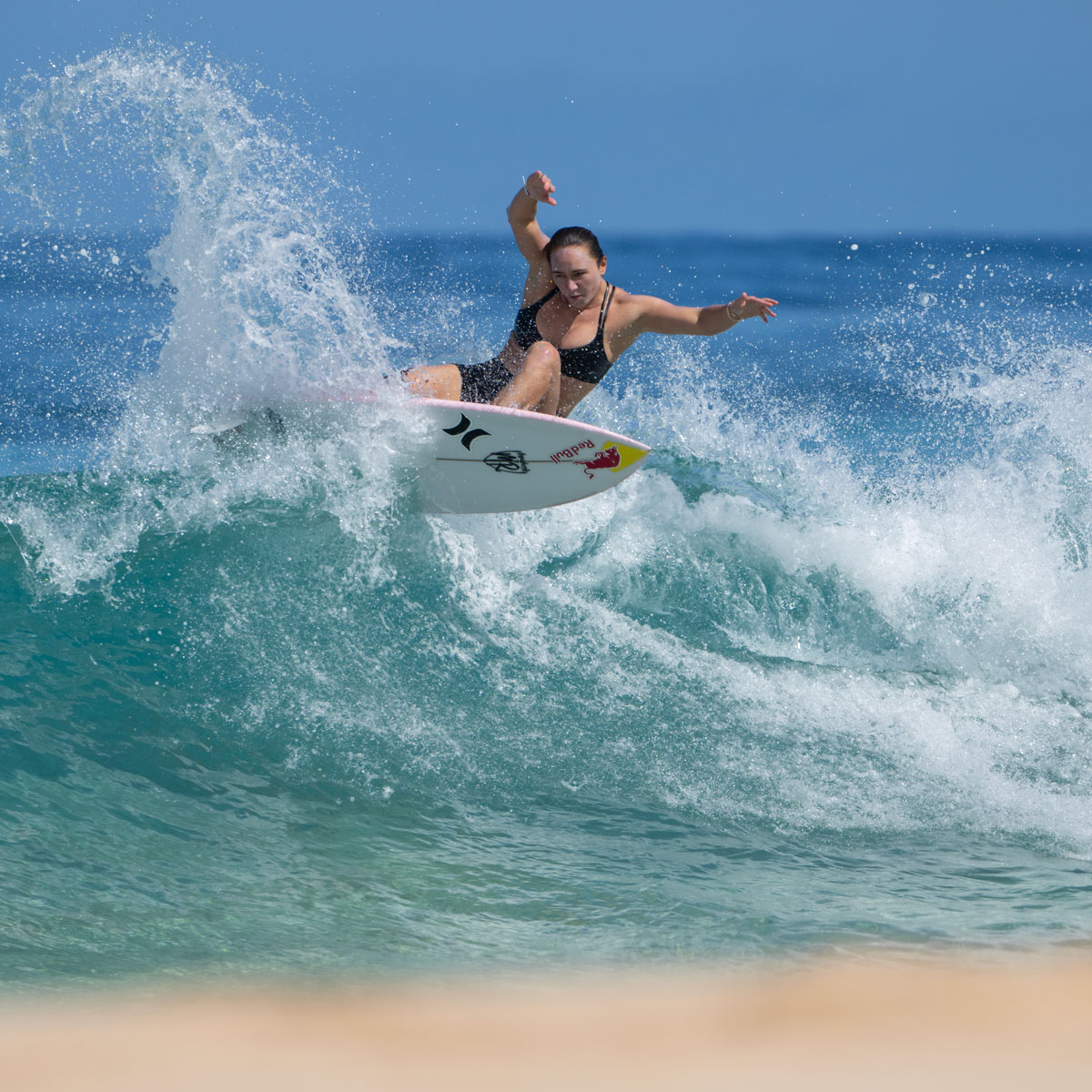
Choosing the right surfboard setup
Twin fin (‘Twinny’)
Best for: Intermediate to advanced surfers.
Feel: Loose and skate-like, great for cruising through slower wave sections. Ideal for those progressing but not yet tackling big waves.
Thruster (three-fin setup)
Best for: Intermediate to advanced surfers.
Feel: Provides better water hold than a twin-fin but requires pumping to generate speed in smaller waves. A common choice for progressing shortboarders.
Single fin
Best for: Beginners, longboarders, and intermediate surfers.
Feel: Offers stability and control with a more traditional, down-the-line surfing style.
Quad fin
Best for: Advanced surfers
Feel: Maximises speed and power through turns, ideal for those seeking a high-adrenaline experience.
Five fin (‘Bonza’)
Best for: Intermediate to advanced surfers.
Feel: Offers flexibility to experiment with different setups for various wave conditions.
By understanding the role of fins and their configurations, you can tailor your surfboard setup to match your skill level and style, therefore enhancing your surfing experience.
